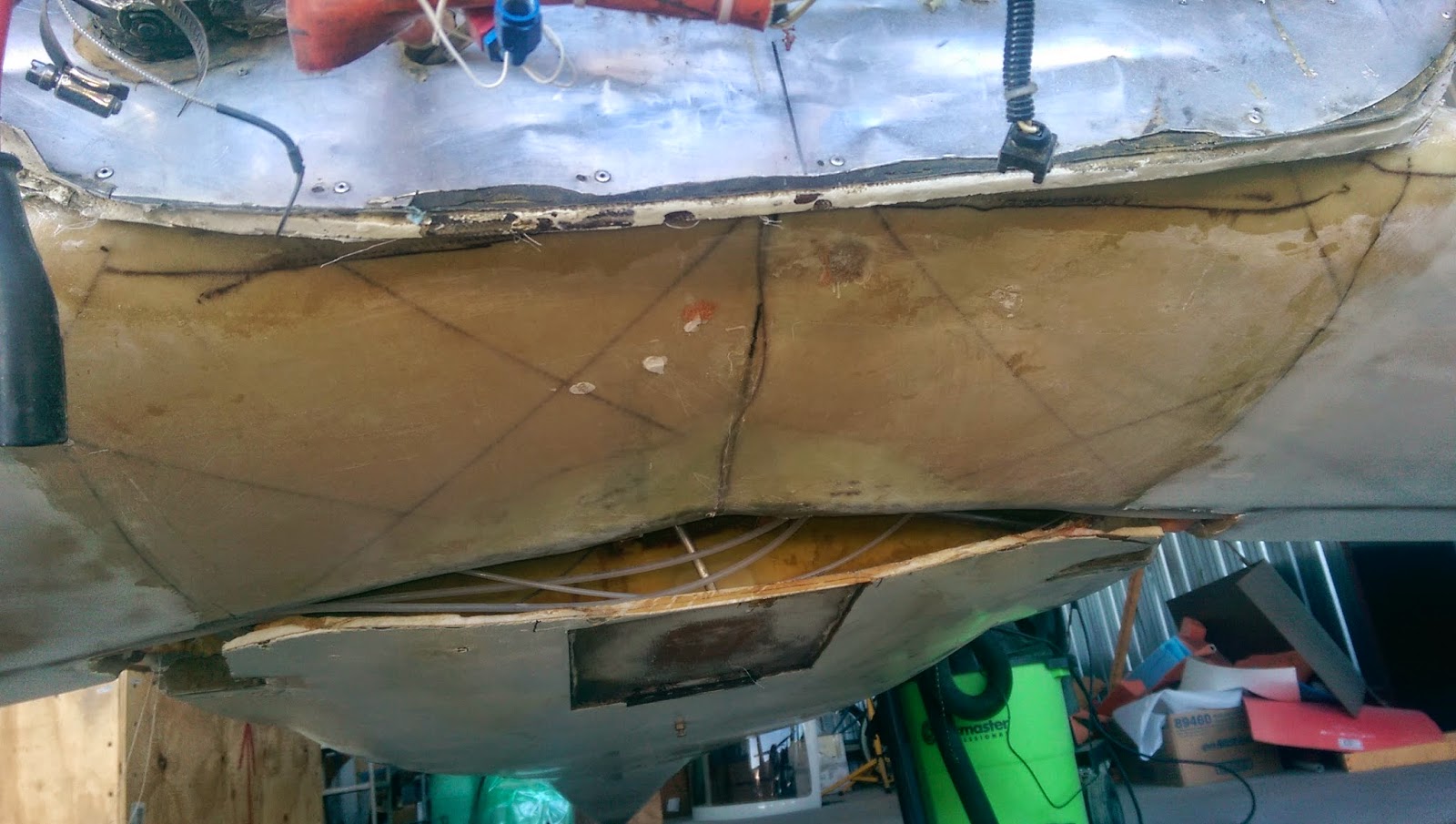It was a mad dash to try and get it ready for Oshkosh. Very long days.
The canard how has a nice coat of micro-filler
Maybe not the most optimum time to hang the engine, but I needed the morale boost. I had almost as much fun dissembling the crate, and freeing up the floor space, as I did hanging the engine. There is a lot to hook up and install; the fuel injection manifold & harness, the starter & alternator, magneto, etc. There is also a lot of baffling.
My little brother Rob came down from northern Illinois to help out. Rob has lots of painting experience. As a matter of fact, he painted this aircraft in 1985 when I was building at the Flying Cloud airport in Minnesota.
After sanding the filler with 36 grit, then 80 grit paper, we did the epoxy wipe. You squeegee it on, than squeegee off as much as you can. Four applications on the underside, and six on the top of the canard. The temps were warm, so it tacked up quickly.
Be sure to click on this photo to see it better. You can see all the huge scratches and pinholes. The epoxy wipe fills all of it.
Finally have some paint on it. I still have to do the elevators and a bit of buffing.
His mission complete, little Rob hits the road. This has to be the loudest motorcycle I've ever heard. He's my little brother, and I gotta love him.


















































